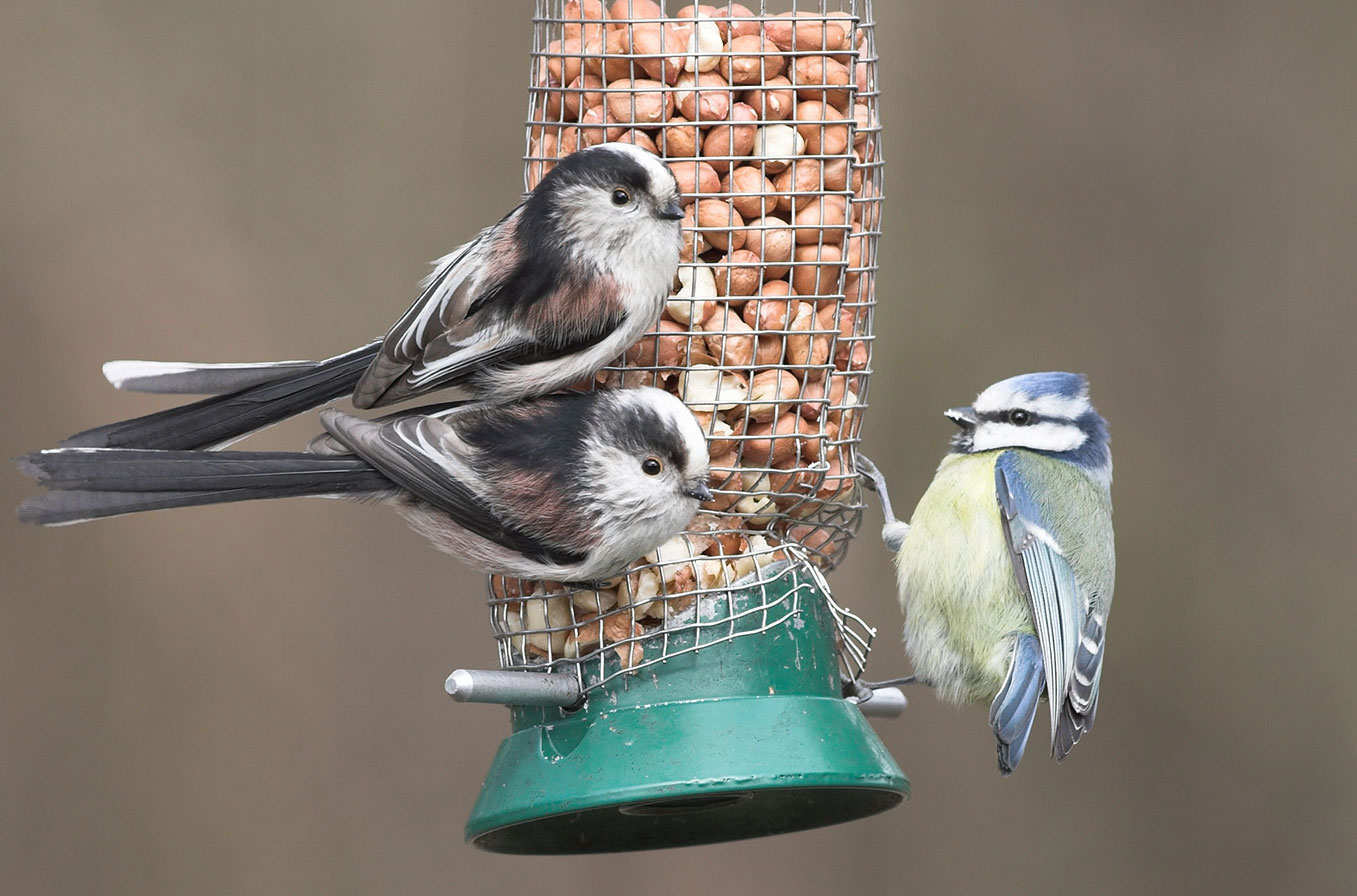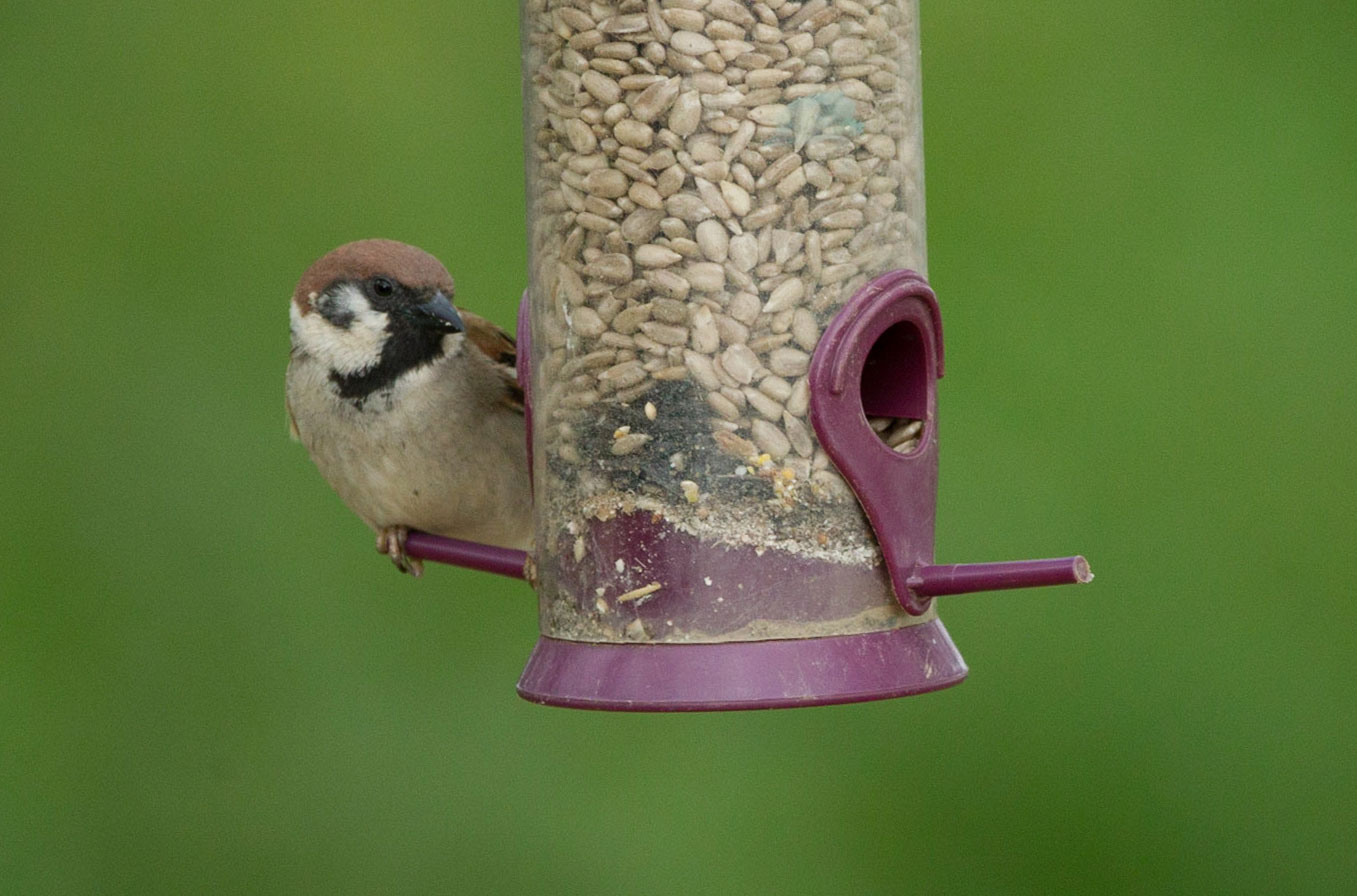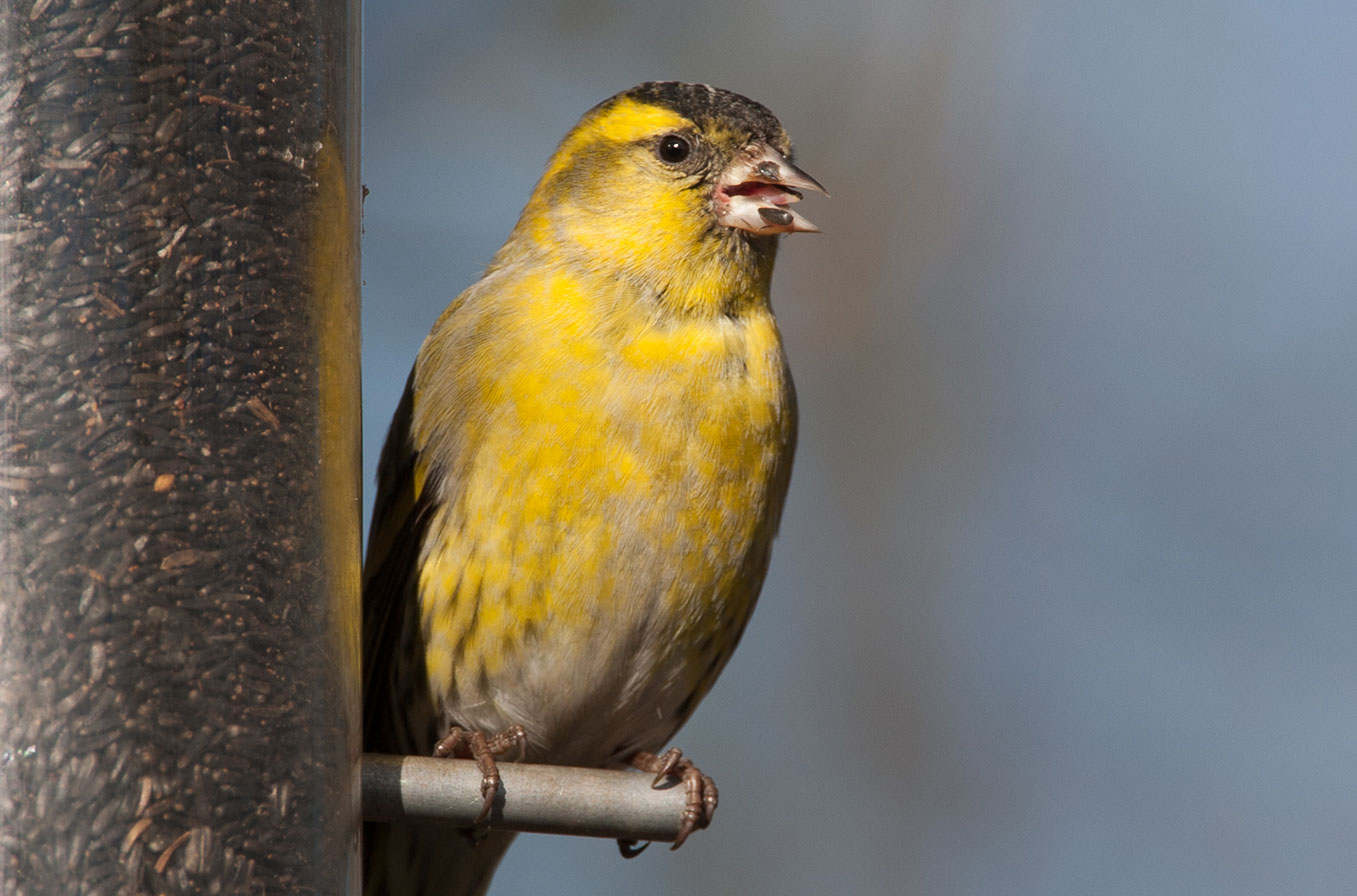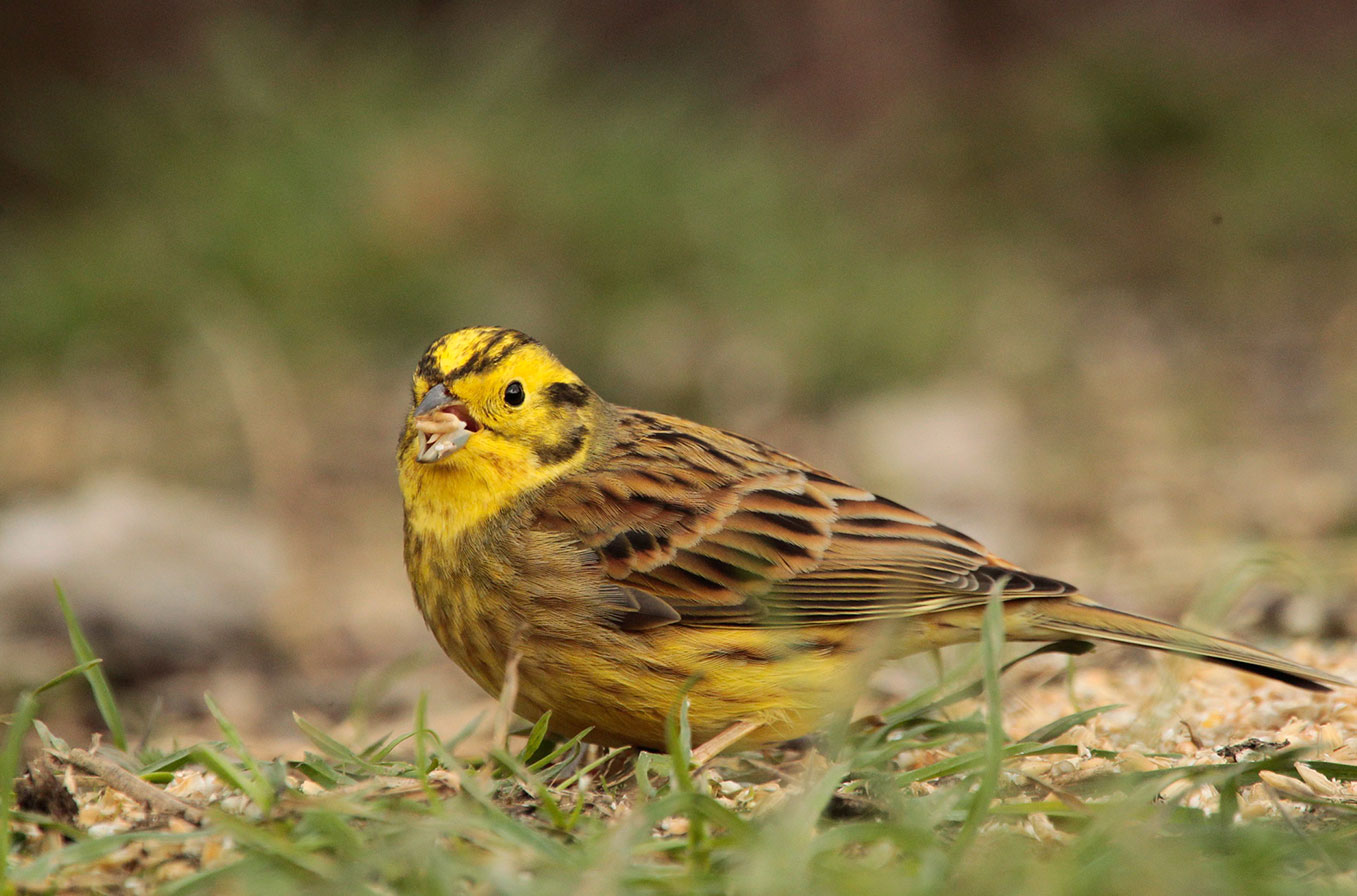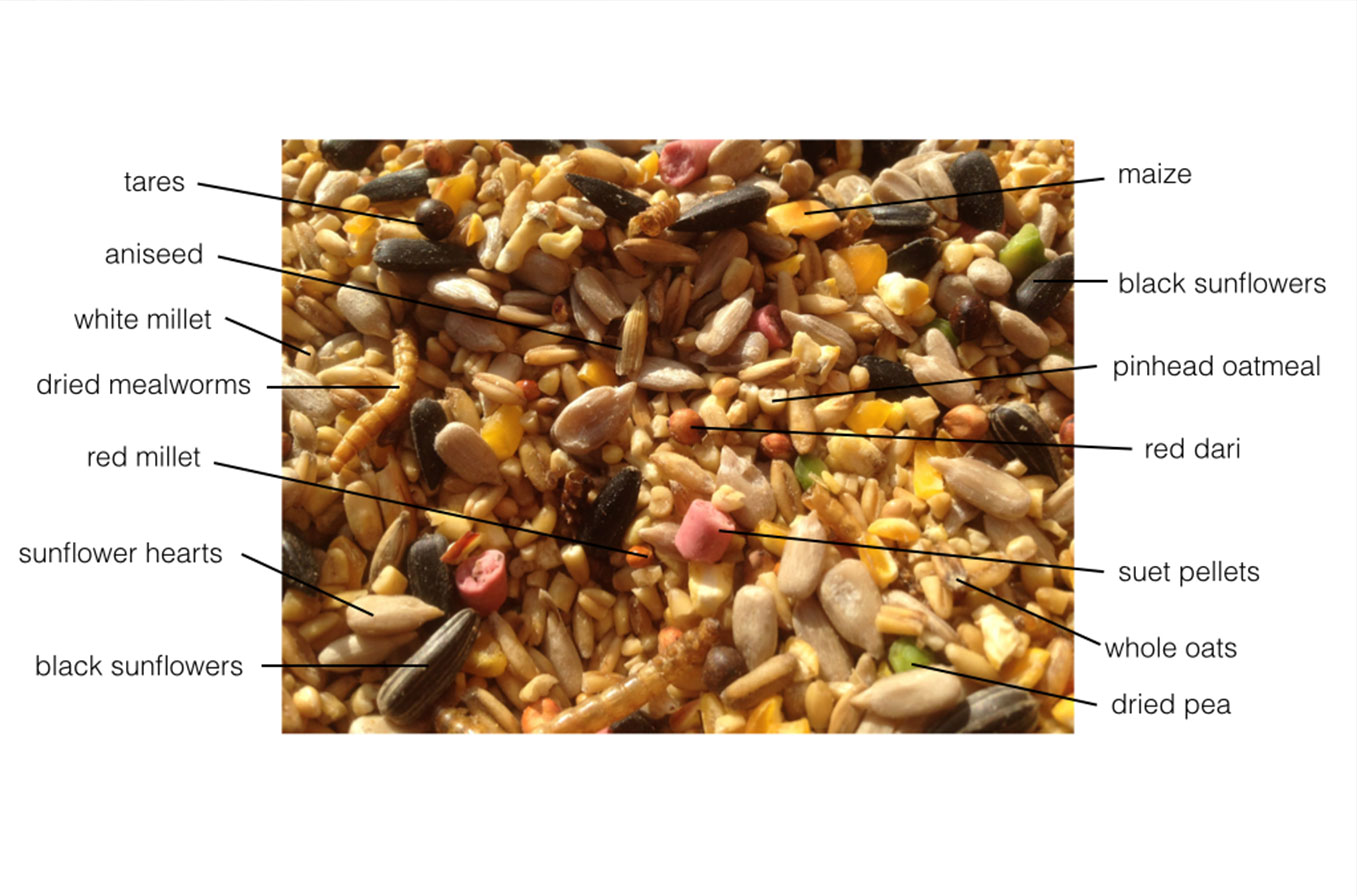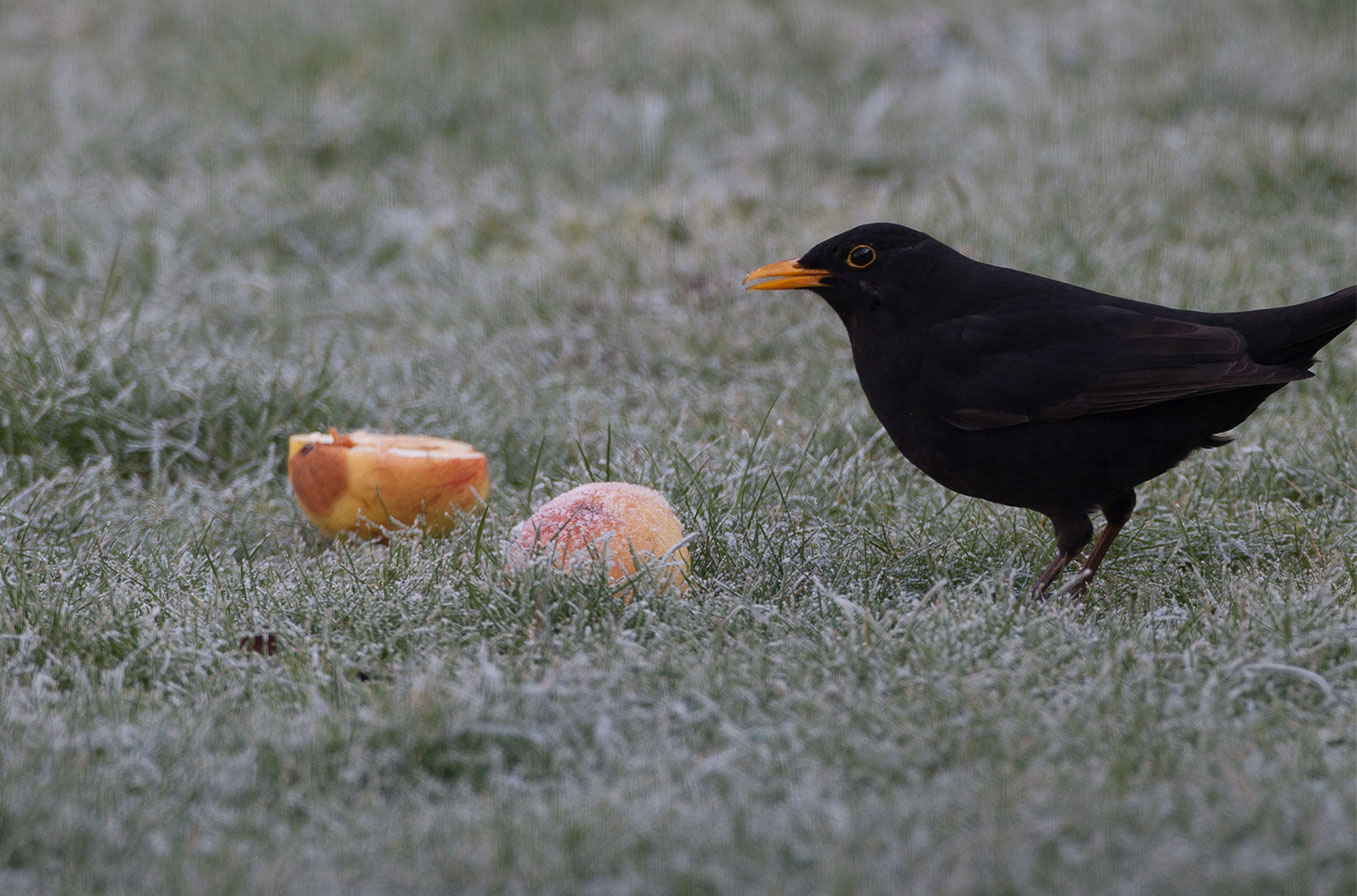
In the mix, what are the best seeds for wild birds?
In the past it was just peanuts and breadcrumbs but now we have a myriad of different bird foods to choose from. In this guide we’ll sort the wheat from the chaff and derive which nuts and seeds attract which species.
Feeding garden birds has never been more popular with almost 15 million households taking pleasure in helping our feathered friends (and squirrels!). No surprise then that it is big business with rows of products on the shelves and a competitive market for feeders and food.
In the past our garden birds needed to be content with some peanuts in a bag (please don’t ever use bags to hang nuts or fat balls!) half a coconut, some bread crumbs and, for the ingenious blue tits, some cream off the milk bottle tops. Now though there are endless varieties of seeds and mixtures plus nibbles, fat balls, cakes and even live food. Picking your way through the options can be a daunting task so if you want to know the difference between millet and maize and what even are dari and tares let me help. I have also included a buying guide at the bottom of the article so check that out too.
Peanuts.
These come in three forms, in their shells (monkey nuts), whole and kibbled (broken into smaller pieces). Peanuts in their shells are good for parrots and squirrels but most other birds struggle to tackle them so they are not a popular option. Whole nuts are popular with many species and jays, nuthatches and wood pigeons will take whole nuts if available however there is a danger of choking for smaller species so they are best fed in wire feeders so that birds need to chisel out smaller pieces. Kibbled peanuts are already broken into smaller pieces but as they lack the shells and are quite oily they can soften quickly and block up feeders so are best used as a table or ground feed.
Sunflowers
Sunflower seeds became popular many years ago now and have held their place as a firm favourite despite the varied foreign competition. Fed in their shells (black, white or striped) or as hearts or kibbled they are very high in energy. In their shells they stay in good condition longer in the feeder and many species such as coal tit or nuthatch which stash seed would prefer these for the same reason. Most tits and larger finches have no problem splitting the shells and extracting the soft heart though the downside of this is the mess that accumulates under the feeder. Hearts (seeds that have been removed from the shell) and chips are readily taken by almost all birds and animals, even hedgehogs will break their usually strict insectivorous diet for these high energy snacks. Fed as part of a mix or on their own in a port feeder or on the ground or table you can’t really go wrong with sunflower seed.
Niger seed
Relatively new to the block but increasingly valued for the smaller, fine billed finches is niger seed. This is a tiny oil rich black seed that is too small to interest most larger birds. Goldfinches, siskins and redpoll though adore it and will form noisy argumentative flocks around niger feeders. It’s worth noting though that being so fine it is best delivered via a specific niger feeder which has narrow slits to avoid too much spillage.
Suet
I have seen some feeders full of suet pellets which as the name suggests are based on fats and so are high in calories. They can be plain or flavoured with berry or fruit juice or even have insect powder or bits in. With no mess these can be a good single food or part of a successful mix. Containing the same ingredients, suet blocks, fat balls or pre-packed coconut husks are also successful for some people. Starlings are real fans of these larger fat based treats.
Oats and other cereals
Oats are a staple of many mixes and can be enjoyed by pigeons, doves and stronger billed finches and buntings, for many smaller birds though they are too hard to be beneficial. Oatmeal (sometimes described as pinhead oatmeal) is the same seed but broken into halves and quarters and this makes it more easily consumed by smaller birds. Rolled oats are also more popular with thrushes taking them from a ground mix.
Like whole oats, wheat and barley are hard seeds and larger birds with effective crops such as pheasants and pigeons will take them readily but they are not much good for smaller species so best avoided.
Small seeds
Small seeds in mixes are often relished by many finches, sparrows, buntings and dunnocks. Red or white millet is a favourite for many farmland birds and if you live near open countryside you could see reed buntings, yellowhammers and even tree sparrows attracted by a small seed mix. Other high energy smaller seeds to look for are poppy, oilseed rape, hemp, linseed, aniseed, and canary seed. Red dari is popular as a small seed though less nutritious than the oiler varieties Its small size though means it's still taken as a second choice by quite a few species.
Larger ingredients such as whole maize (corn) and dried peas are attractive to pigeons but no good for most smaller birds. Tares are a similar dried pulse and used as a bulking variety and in pigeon mixes. Other additives to cheap mixes include dog biscuits (which are no good to anything except dogs), lentils, rice and even sawdust and sand has been found in some!
Meal worms
Dried meal worms bought from most pet shops and good bird food suppliers are a great protein hit for young or adult birds. During the breeding season these are readily taken to fledglings but can be a bit large and dry for smaller nestlings so soak them overnight to reduce choking risk and provide moisture. Live meal worms or waxworms will be even more gratefully received and pet shops will often sell them as lizard food.
Fruit
Sultanas are a great addition to the menu and can be bought cheaply from supermarkets, fed on the ground thrushes will relish these and target them over anything else. Half apples, pears, plums are also widely enjoyed by blackbirds, robins, song thrushes and also winter migrants and are easier to find in snow where seed has been covered.
Your gardens' unique variety of birds will prefer an equally unique mix of seed so trial and error is the way to go. Try a few types of food and feeders and see what works. For the ultimate recipe, mix your own and regularly inspect the feeding area to see what is being favoured and whats ignored. You may find that this changes with the seasons so vary what you put out. Think about high energy seeds, nuts and fruit in the winter and protein rich mixes with insects in the summer and autumn. If you are starting from scratch or only have a few birds visiting begin with small amounts and refresh regularly to avoid a lump of mouldy food that won’t attract anything and be a waste of money. Once you have the secret to success you will be topping those feeders up daily and delighting in the many visitors to your banquet!
Where to buy
To get the best value for money it is often best to buy in bulk either from markets or direct from large animal feed outlets rather than pet shops or garden centres however with many of the main bird seed suppliers now selling online it is easy to get sacks of seed delivered straight to your door. I have found eBay to be by far the best place to buy from with really fast and often free delivery. Here is a list of the main suppliers I use for my bird seed who I have found to be great for quality and value.
eBay:
I get my Peanuts from Maltbys who also supply my mealworms (5kg is a lot of worms and will last ages!). I generally buy large sacks of Sunflower hearts from Hopewells 12.75kg boxes of suet pellets from 'starmer ltd' 2kg bags of sultanas from Jacksons foods. For a base mix I often buy 20kg of a 'robin mix' which I buy from 'Hopewells' this is great as it has a good variety of seeds but also mealworms. I also get black sunflower seeds from them. I like to get big tubs of peckish fat balls as when they are used up I have useful tubs that I can use for the others seed and stack conveniently.
Amazon:
Maltbys also sell on Amazon and the prices and delivery is still great value on peanuts, black sunflower seeds, sunflower hearts and mealworms.
And importantly
Don’t forget that feeding the garden birds provides great pleasure to nature lovers but remember birds can become dependant on your food so keep feeders topped up in cold weather. Clean feeders and surfaces regularly to avoid spreading disease, you wouldn't expect your pet dog or cat to feed from a dirty bowl so don’t lower the standards for our wild friends. Providing clean water too as an extra lifeline for wildlife in the garden and try to keep it unfrozen during the coldest spells.
bird identification, when, where, how and then what?
Let us know in the comments below what you find works best for you and which birds prefer which food?
